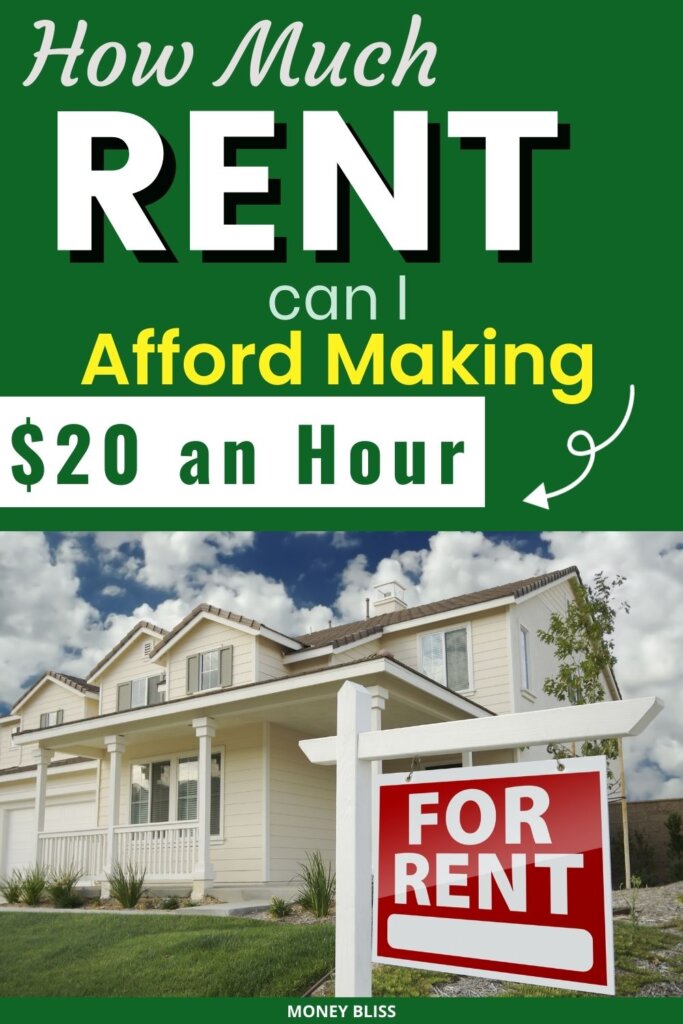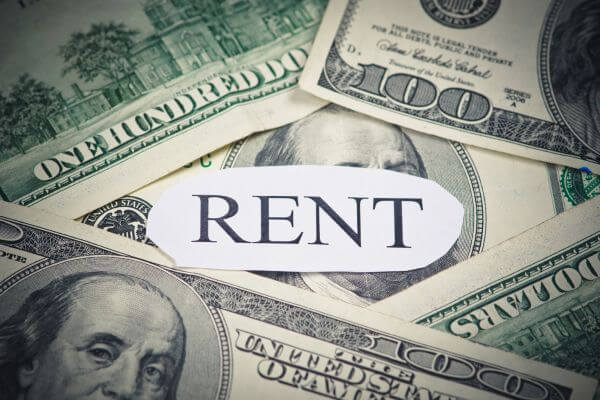How Much Rent Can I Afford Making $20 An Hour? Find Out
Inside: Ever wondered how much rent you can afford on a particular hourly wage? Use the rent calculator to see what you can afford on $20 an hour. Find out from the experts in this guide.
Honestly, this is something most people don’t think about until after they get themselves in a troubling situation.
Determining rent affordability is paramount in your financial planning. It’s important to strike a balance between comfortable accommodation and fiscal responsibility to avoid financial strains down the road.
There exists a direct correlation between your income and the rent you can afford to pay. Higher income opens doors to pricier accommodations while lower wages might enforce budget constraints. Understanding this relationship is crucial.
It guides your housing decisions and helps maintain a stable financial footing.
By calculating your rent affordability, you can set a clear budget, establish your housing needs, and navigate the real estate market with ease.

How much rent can I afford making $20 an hour?
If you make $20 an hour, based on a standard 40-hour work week, your gross income would come up to approximately $3,467 per month.
If you follow the 30% rule, this means you should allocate a maximum of $1040 each month for rent.
$3467 x 30% = $1040
However, remember this is a rough estimate and your specific expenses and financial obligations should also be taken into consideration before deciding on a rent budget.
What Percentage of My Income Should Go to Rent?
This is a good question to consider.
Even better when you are trying to figure out how much to save before moving out.
The 30% Rule Explained
The 30% rule is a simple guideline suggesting that one should allocate no more than 30% of their gross (before taxes) monthly income toward rent.1
This rule of thumb has been widely adopted as a measure of rent affordability. The beauty of the 30% rule lies in its simplicity and ease of use, allowing for quick budgeting while maintaining room for other essential expenses.
Be Conservative and Stick with 20%
According to Money Bliss budgeting percentages, adopting a more conservative approach to budgeting by allocating only 20% of your income towards housing costs can be more beneficial.
If you follow the 20% rule, this means you should allocate a maximum of $693 each month for rent.
$3467 x 20% = $693
This strategy helps to account for additional expenses such as utilities, unexpected repairs, and other costs that often accompany home ownership or renting.
This reduced allocation promotes being smart with your money to avoid unnecessary financial stress.
When to Consider Stretching the 30% Rule
At times, it might be necessary to stretch the 30% rule particularly in high-cost areas or during short-term situations. It’s crucial, however, to understand the potential ramifications and adjust other spending habits to compensate.
A temporary overshoot could be justifiable if it leads to significant future benefits, like proximity to a well-paying job. Always remember, that this should be an exception rather than the norm.
How Does the Rent Calculator Work?

A rent calculator is a practical tool that aids in estimating the rent you can afford. You don’t want to be forced to live on a shoestring budget.
This simple calculator is based on your hourly income and spending either 20-30% of your gross income on rent.
Fine-tuning your budget is possible by adjusting the percentage you wish to spend on housing. Remember, the final number serves as a guide and may require adjustments based on your financial situation.
Breaking Down Your Monthly Budget
For savvy budgeters, adhering to the 50/30/20 rule can provide a clear framework for managing your expenses and growing your savings. While at Money Bliss, we went a step further to define it as the 20-50-10-20-0 budget rule. (save-basic expenses-give-fun spending-debt).
This approach gives a precise breakdown of your monthly budget, ensuring that you are living within your means while also setting funds aside for future financial security.
Housing Costs

The basic 50/30/20 rule suggests dividing your monthly net income into 50% for necessities such as rent and groceries, 30% for personal wants like clothing or travel, and designating the remaining 20% for savings goals or debt repayment.
By adding these to your housing budget, you get a realistic picture of your monthly accommodation costs.
When budgeting for rent, one must account for other housing costs. These may include utilities like gas, electricity, and water, as well as internet, cable TV, and trash collection. You might also need to factor in the renter’s insurance and potential parking fees.
Essential Living Expenses
In addition to housing, remember to consider essential living expenses in your budget. These include food, transportation, health insurance, and childcare.
In addition, we advise our readers to put aside about 15-25% of their net income for savings. Accounting for these factors ensures you don’t stretch your budget to the limit solely on rent.
Discretionary spending
While you need to cover essential living expenses, it’s also important to allocate funds for discretionary spending – we call it FUN spending.
This category involves non-essential purchases like eating out, entertainment, vacations, and shopping. Using the 50/30/20 rule as a guideline, 30% of your net income can be put towards these wants, allowing you to enjoy your income while staying financially sound.
Factors Influencing Rent Affordability

Many factors impact how much you can spend on rent. As such, this will vary from person to person as situations vary. While these numbers are gross income, you need to realize the amount of money coming out for taxes. Many people don’t understand gross income vs net income.
Furthermore, the cost of living and rental prices in your chosen location can greatly impact how much you can afford. So, use the rent affordability calculator!
Location and Rent Prices
The location of a home greatly influences its rent prices. HCOL vs LCOL is a real thing!
Proximity to the city center, schools, parks, and shopping centers typically equate to higher costs. For example, renting trends in 2023 indicated an increase in prices the closer you get to these amenities.2
By choosing to live a bit further out, you may be able to find more affordable rent payments.
Areas with higher crime rates will have lower rents but these tend to come with more issues.
Size and Type of Housing

The size and type of your dwelling can also significantly affect your rent. Large houses with multiple rooms naturally cost more, whereas smaller apartments or studios are less expensive.
The type of housing also plays a role; for instance, a modern, furnished apartment might cost more than an unfurnished one. Tailoring your choice to your needs and budget allows for comfortable living without overspending.
If you have a pet, don’t forget it may cost more plus you have a pet deposit.
Lease Length Considerations
Lease length can directly impact your rent. Longer leases often equate to lower monthly rents, offering landlords a sense of security. On the contrary, short-term or month-to-month leases typically come with a higher price tag due to their inherent flexibility.
Assess your personal situation and potential need for flexibility before deciding on the lease term.
Also, the amount you need to put down as a security deposit can be negotiated.
Tips to Maximize Your Rent Budget

Plan your budget carefully taking into account factors like income, potential expenses, and the cost of living in your chosen location. So, if you are thinking $5000 is enough to move out, you may be surprised.
Use the 30% rule as a guide but be aware that in high cost of living areas, you may need to adjust this percentage. When searching for a rental, compare the cost and amenities of different apartments in your preferred areas and see if there are nearby neighborhoods with cheaper rental costs.
Also, you may need to embrace cost-saving measures such as cooking at home and shopping frugally to free up more income for rent.
You can learn more about those areas on our site.
Tip #1 – Reducing Costs and Saving
There are several ways to reduce housing costs and save more in this tough rental market.
- Consider downgrading to a smaller place or moving to a less expensive area.
- Negotiate a longer lease term for a reduced monthly rent.
- Maybe even consider becoming a permanent housesitter to free up your budget.
Small changes can lead to substantial savings over time.
Learn how to budget on a low income.
Tip #2 -Planning for Future Rent Increases
Each year when your lease is about to renew, always factor in the possibility of future rent increases, which could be influenced by trends in the real estate market and inflation.
Ensuring your income can keep up with these increases is necessary for maintaining affordability. Continually reassess your rent affordability, especially during annual lease renewals or job changes.
Tip #3 – Get Roommates
Sharing your space with a roommate is a practical way to cut down on your living expenses substantially. By having one or more people to share the rental costs, utilities, and even groceries in some instances, you are likely to free up a considerable portion of your budget.
However, it’s important to clearly set boundaries and expectations to maintain a smooth living arrangement.
FAQ on Rent Affordability
Is $20 an hour a livable wage?

Given the average rent in the United States is $1702, $20 an hour is not a livable wage, especially in San Francisco or New York. As such, the maximum you should be spending on rent is $1040.
If workers are unable to afford to live in the communities they work in, it puts the whole system under stress. While there have been movements to create low-income housing, it is slow to happen and for many, difficult to apply.
Ultimately, whether this wage allows for a comfortable lifestyle depends largely on your financial habits, commitments, and where you live.
With good financial planning, including a solidly crafted budget that factors in rent, savings, and living expenses, a $20 hourly wage can indeed cater to a decent lifestyle.
Remember to reassess your budget regularly and adjust as necessary to meet changing financial landscapes.
Making wise financial decisions now can lead to a financially secure future. Now, do you have the habits needed to be financially stable?
Source
- FiftyThirtyTwenty. “About.” http://fiftythirtytwenty.com/about.html. Accessed November 13, 2023.
- Rent. “Rent Growth in Half of Suburbs Outpacing Metro’s Core City.” https://www.rent.com/research/suburban-growth-outpacing-core-city/. Accessed November 13, 2023.
- Rent Cafe. “Average Rent in the U.S.” https://www.rentcafe.com/average-rent-market-trends/us/. Accessed November 13, 2023.
Did the post resonate with you?
More importantly, did I answer the questions you have about this topic? Let me know in the comments if I can help in some other way!
Your comments are not just welcomed; they’re an integral part of our community. Let’s continue the conversation and explore how these ideas align with your journey towards Money Bliss.


